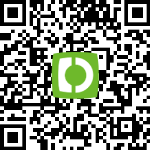(專題)臺灣閱讀策略學政策與執行
作者:國立清華大學教育與學習科技學系柯華葳
卷期:65卷第1期
日期:2020年3月
頁碼:93-114
DOI:10.6209/JORIES.202003_65(1).0004
摘要:
基於臺灣學生在PIRLS 2006和PISA 2006的閱讀表現以及當時學校語文教學和閱讀教育狀況,教育部(2008)推出「悅讀101-國民中小學提升閱讀計畫」,計畫期程為2008-2017年,主要工作項目有增加學校圖書量、設置圖書教師、推動閱讀策略教學等。本文將以推動閱讀策略教學為主,透過歷屆PIRLS資料與觀課,檢視10年間以經費補助研發、教師培訓等方式,學校落實閱讀理解教學的狀況。在閱讀策略教學推展上,經由教學實驗成果出版《閱讀理解策略教學手冊》加上專家學者提出「閱讀理解策略成分雙向表」,兩者作為師資培育教材編寫依據,並建立「課文本位閱讀理解教學模式」,設計教案供教師參考。在教師專業成長方面,除在臺灣設立四區閱讀教學研發中心,各自擔起責任縣市師培工作,亦辦理線上初階研習課程,使更多教師認識閱讀理解策略及其教學。推動閱讀策略教學的成果,包括國語科教學時間和跨科閱讀指導時間比例增加、教師每天教導閱讀策略比例增加。然學生在學校獨立閱讀時間並未增加,閱讀範疇的寬廣度則增加不多。透過觀課,研究者發現使用閱讀策略教學的教師,有人用之於無形,有人按部就班,亦不乏有教師只教策略步驟,甚至要求學生有標準答案,忽略使用閱讀策略的目的是為加深文本的理解。這顯示有部分教師對於閱讀理解以及透過閱讀學習和獨立閱讀的信念有再澄清的必要。這也是下一階段推動閱讀策略教學須注意的地方。
關鍵詞:悅讀 101、課文本位閱讀理解策略教學、國際閱讀素養研究
 《詳全文》
《詳全文》

參考文獻:
- 柯華葳(2012)。由參與PIRLS看國際評比。載於中國教育學會(主編),2020教育願景(pp. 25-49)。臺北市:學富。 【Ko, H.-W. (2012). International assessment and PIRLS. In China Education Society (Ed.), Education vision 2020 (pp. 25-49). Taipei, Taiwan: Pro-Ed.】
- 柯華葳(2013)。閱讀是新世紀必要的學習管道,人文與社會科學簡訊,14(4),4-11。 【Ko, H.-W. (2013). Reading is learning in new century. Humanities and Social Sciences Newsletter, 14(4), 4-11.】
- 柯華葳(2019)。106~108年度閱讀師資培育-區域人才培育中心總計畫成果報告。臺北市:教育部。 【Ko, H.-W. (2019). Report of reading teachers professional development: Year 2017-2019. Taipei, Taiwan: Ministry of Education.】
- 柯華葳(主編)(2010)。閱讀理解策略教學手冊。臺北市:教育部。 【Ko, H.-W. (Ed.). (2010). Handbook of reading strategies instruction. Taipei, Taiwan: Ministry of Education.】
- 柯華葳、張郁雯、詹益綾、丘嘉慧(2017)。PIRLS 2016臺灣四年級學生閱讀素養國家報告。桃園市:國立中央大學。 【Ko, H.-W., Chang, Y.-W., Chan, Y.-L., & Chiu, C.-H. (2017). Taiwan PIRLS 2016 national report. Taoyuan, Taiwan: National Central University.】
» 展開更多
- 柯華葳(2012)。由參與PIRLS看國際評比。載於中國教育學會(主編),2020教育願景(pp. 25-49)。臺北市:學富。 【Ko, H.-W. (2012). International assessment and PIRLS. In China Education Society (Ed.), Education vision 2020 (pp. 25-49). Taipei, Taiwan: Pro-Ed.】
- 柯華葳(2013)。閱讀是新世紀必要的學習管道,人文與社會科學簡訊,14(4),4-11。 【Ko, H.-W. (2013). Reading is learning in new century. Humanities and Social Sciences Newsletter, 14(4), 4-11.】
- 柯華葳(2019)。106~108年度閱讀師資培育-區域人才培育中心總計畫成果報告。臺北市:教育部。 【Ko, H.-W. (2019). Report of reading teachers professional development: Year 2017-2019. Taipei, Taiwan: Ministry of Education.】
- 柯華葳(主編)(2010)。閱讀理解策略教學手冊。臺北市:教育部。 【Ko, H.-W. (Ed.). (2010). Handbook of reading strategies instruction. Taipei, Taiwan: Ministry of Education.】
- 柯華葳、張郁雯、詹益綾、丘嘉慧(2017)。PIRLS 2016臺灣四年級學生閱讀素養國家報告。桃園市:國立中央大學。 【Ko, H.-W., Chang, Y.-W., Chan, Y.-L., & Chiu, C.-H. (2017). Taiwan PIRLS 2016 national report. Taoyuan, Taiwan: National Central University.】
- 柯華葳、詹益綾、張建妤、游婷雅(2007)。臺灣四年級學生閱讀素養(PIRLS 2006報告)。桃園市:國立中央大學。 【Ko, H.-W., Chan, Y.-L., Chang, C.-Y., & Yu, T.-Y. (20017). Taiwan PIRLS 2007 national report. Taoyuan, Taiwan: National Central University.】
- 徐秋月、吳正新、劉妍希(2011)。閱讀素養與學校因素關係的探討。載於臺灣PISA國家研究中心(主編),臺灣PISA 2009結果報告(pp. 247-290)。臺北市:心理。 【Hsu, C.-Y., Wu, C.-H., & Liu, Y.-S. (2011). Reading literacy and school factors. In Taiwan PISA Center (Ed.), Taiwan PISA 2009 national report (pp. 247-290). Taipei, Taiwan: Psychological.】
- 張俊彥、李哲迪、任宗浩、林碧珍、張美玉、曹博盛…張瑋寧(2018)。國際數學與科學教育成就趨勢調查2015(TIMSS 2015):臺灣精簡國家成果報告。臺北市:國立臺灣師範大學科學教育中心。 【Chang, C.-Y., Lee, C.-D., Jen, T.-H., Lin, P.-J., Chang, M.-Y., Tsao, P.-S., …Chang, W.-N. (2018). Taiwan’s mathematics and science education in TIMSS 2015: Summary of the national report for Taiwan. Taipei, Taiwan: Science Education Center, National Taiwan Normal University.】
- 教育部(2008)。悅讀101-國民中小學提升閱讀計畫。臺北市:作者。 【Ministry of Education. (2008). Reading 101-Plan to promote reading in elementary and junior high schools. Taipei, Taiwan: Author.】
- 陳利銘、許添明(2003)。我國小班政策之檢討與改進建議。教育政策論壇,6(2),1-20。 【Chen, L.-M., & Hsu, T.-M. (2003). On class-size reduction policy for Taiwan compulsory education. Educational Policy Forum, 6(2), 1-20.】
- 陳明蕾(2019)。台灣十年來教師閱讀教學與學生閱讀表現關係之探討:來自PIRLS 2006、2011與2016的證據。教育心理學報,51(1),51-82。 【Chen, M.-L. (2019). The relationship between teacher reading instruction and students’ reading performance in the past ten years of Taiwan: Evidence from PIRLS 2006, 2011 and 2016. Bulletin of Educational Psychology, 51(1), 51-82.】
- 臺灣PISA國家研究中心(2015)。臺灣PISA 2012結果報告。臺北市:心理。 【Taiwan PISA Center. (2015). Taiwan PISA 2012 national report. Taipei, Taiwan: Psychological.】
- 鄭博文、廖年淼、陳斐娟(2018)。十二年國教不同入學管道學生學習困擾之比較分析。教育政策論壇,21(1),1-29。 【Zheng, B-W., Liao, N-S., & Chen, F-C. (2018). A comparative study on students’ difficulty in learning by different systems of admission of 12-year basic education. Educational Policy Forum, 21(1), 1-29.】
- 謝進昌(2015)。有效的中文閱讀理解策略:國內實徵研究之最佳證據整合。教育科學研究期刊,60(2),33-77。doi:10.6209/JORIES.2015.60(2).02 【Hsieh, J.-C. (2015). Effective Chinese reading comprehension strategy: Best-evidence synthesis of Taiwanese empirical studies. Journal of Research in Education Sciences, 60(2), 33-77. doi:10.6209/JORIES.2015.60(2).02】
- Fullan, M. (2001). The new meaning of educational change. New York, NY: Teachers College Press.
- Lin, F.-L., Wang, T.-Y., & Yang, K.-L. (2018). Description and evaluation of a large-scale project to facilitate student engagement in learning mathematics. Studies in Educational Evaluation, 58, 178-186. doi:10.1016/j.stueduc.2018.03.001
- Mullis, I. V. S., Martin, M. O., Kennedy, A. M., & Pierre, F. (2007). PIRLS 2006 international report: IEA’s progress in international reading literacy study in primary schools in 40 countries. Chestnut Hill, MA: Boston College.
- Palincsar, A. S., & Brown, A. L. (1984). Reciprocal teaching of comprehension-fostering and comprehension-monitoring activities, Cognition and Instruction, 1(2), 117-175. doi:10.1207/s1532690xci0102_1
- Viennet, R., & Pont, B. (2017). Education policy implementation: A literature review and proposed framework (OECD Education Working Paper, No. 162). Paris, France: OECD Publishing. doi:10.1787/fc467a64-en
Journal directory listing - Volume 65 (2020) - Journal of Research in Education Sciences【65(1)】March (Special Issue: Language and Culture Education Policies)
(Special Issue) Reading Policy and Reading Instruction in Taiwan
Author: Hwa-Wei Ko (Department of Education and Learning, National Tsing Hua University)
Vol.&No.:Vol. 65, No.1
Date:March 2020
Pages:93-114
DOI:10.6209/JORIES.202003_65(1).0004
Abstract:
After the 2006 report of the Progress in International Reading Literacy Study was published in Taiwan, the Ministry of Education released a Reading 101 policy to encourage reading instruction in elementary schools. Few Chinese language arts teachers were familiar with reading strategies before 2006. To promote the teaching of reading and comprehension strategies in elementary classes, a textbook-based approach was initiated for reading instruction. A framework and guidelines were first developed for teaching reading and comprehension strategies in elementary schools. Example lesson plans were then compiled, and an in-service training program was provided or teachers.
After implementing the Reading 101 policy for 10 years, teachers’ ratings of their daily adoption of reading strategies in their classes increased. Yet, while conducting classroom observations, discussions with the teachers, and feedback analysis for the teachers, the teachers were categorized into the following three groups based on their mastery level of providing instructions on reading comprehension strategies:
1. The teacher demonstrates understanding of the strategy principle and uses appropriate teaching methods to convey the principle to students.
2. The teacher did not demonstrate a full understanding of the strategy principle but often mentioned the terminologies, which were not comprehensible to their students.
3. The teacher demonstrated their understanding of the strategy principle and used very complicated methods to teach their students. Thus, the students were confused about several topics.
Some teachers had practical skills but did not understand why reading strategies should be incorporated in their teaching methodology. A follow-up design of professional development should be used to encourage teachers to conduct more discussions pertaining to the process and meaning of reading and practice a teaching methodology that involves reading instruction. Professional group interaction on the significance of reading can shape their teaching practice in the class.
Keywords:Reading 101 (MOE), textbook-based approach to reading instruction, progress in international reading literacy study